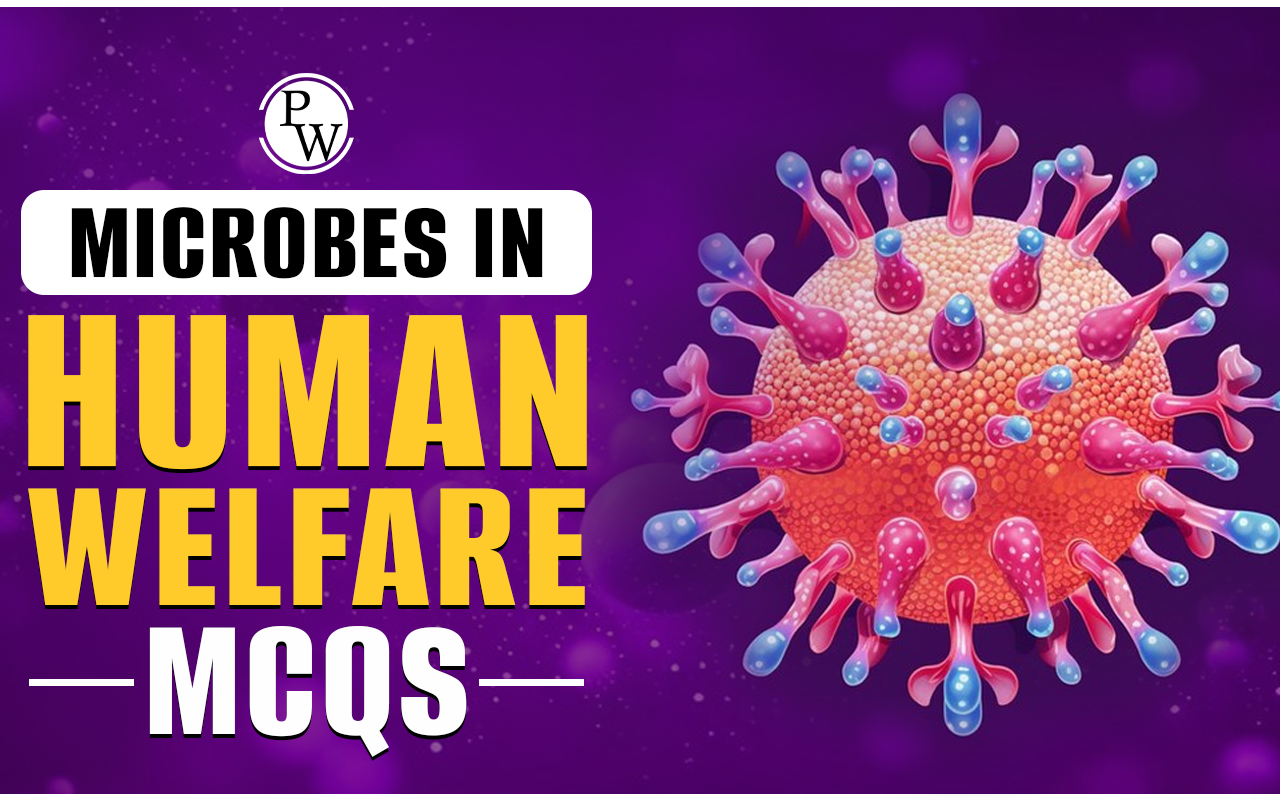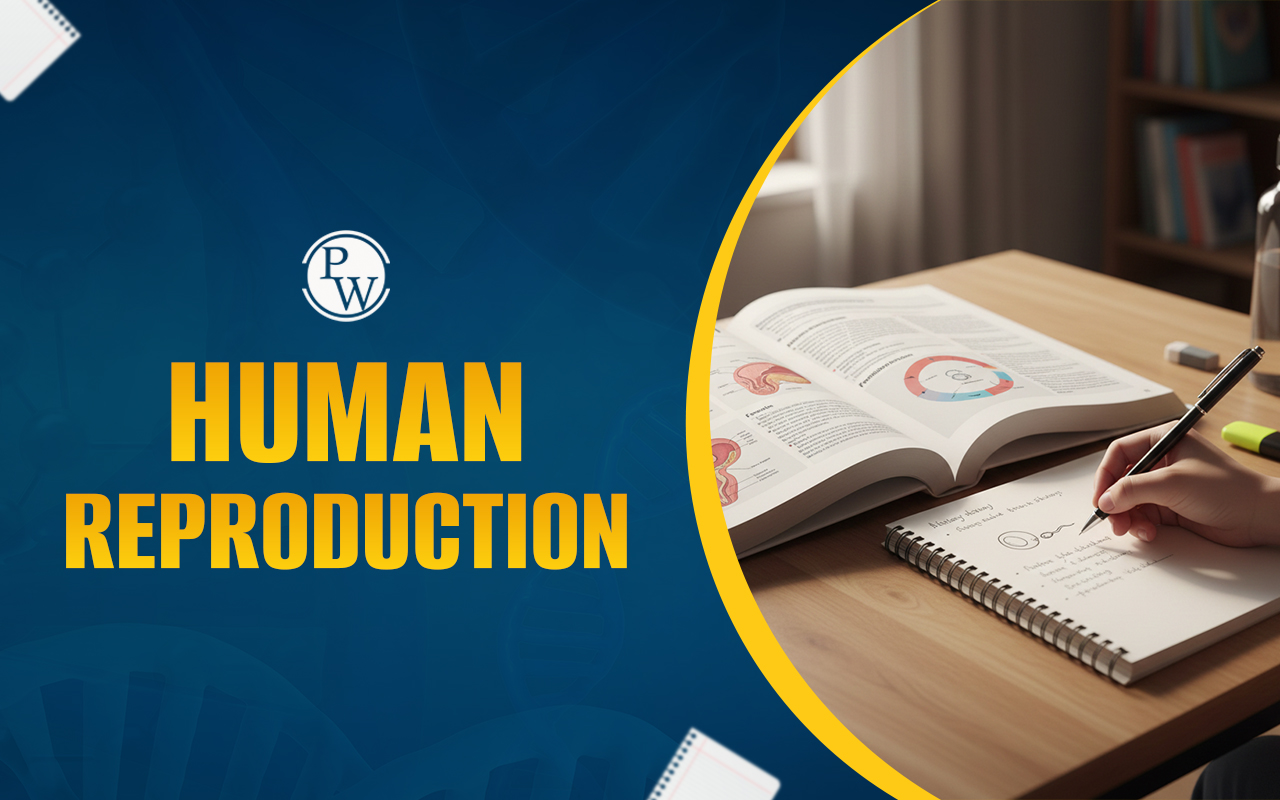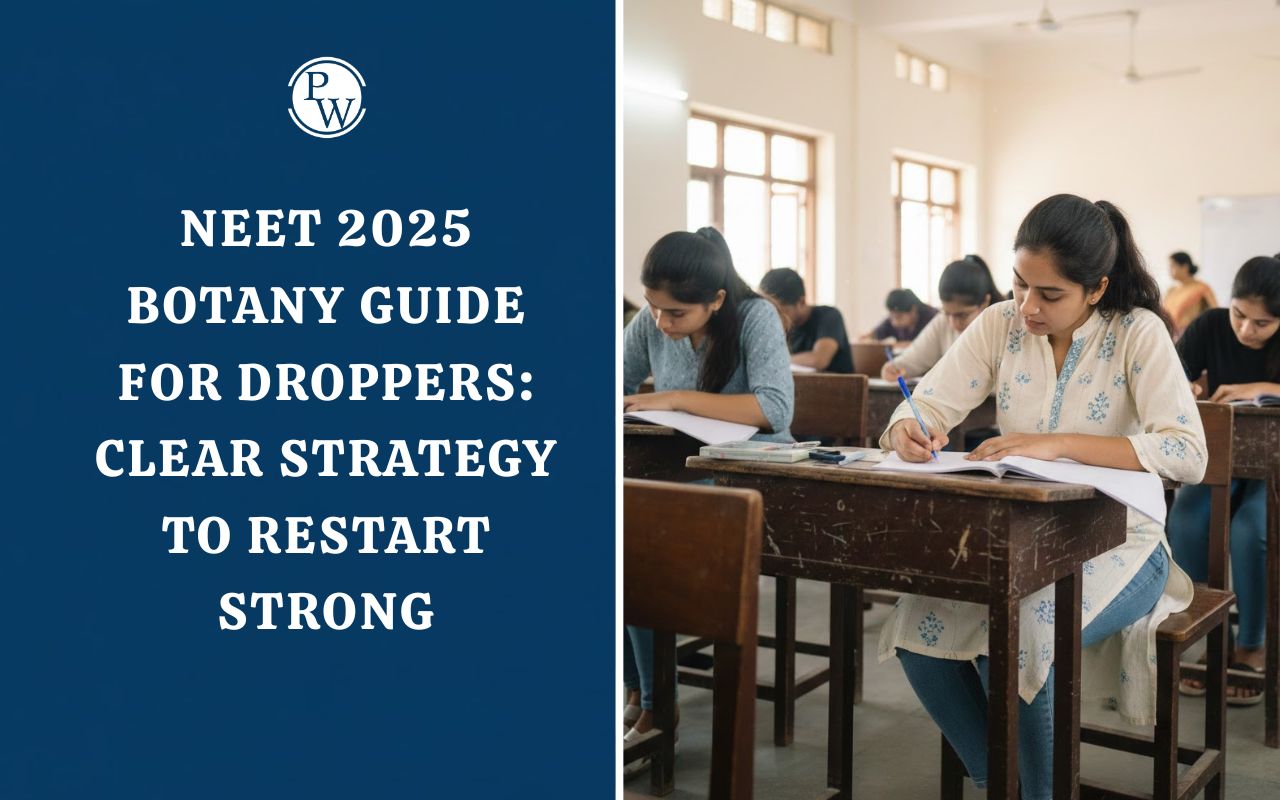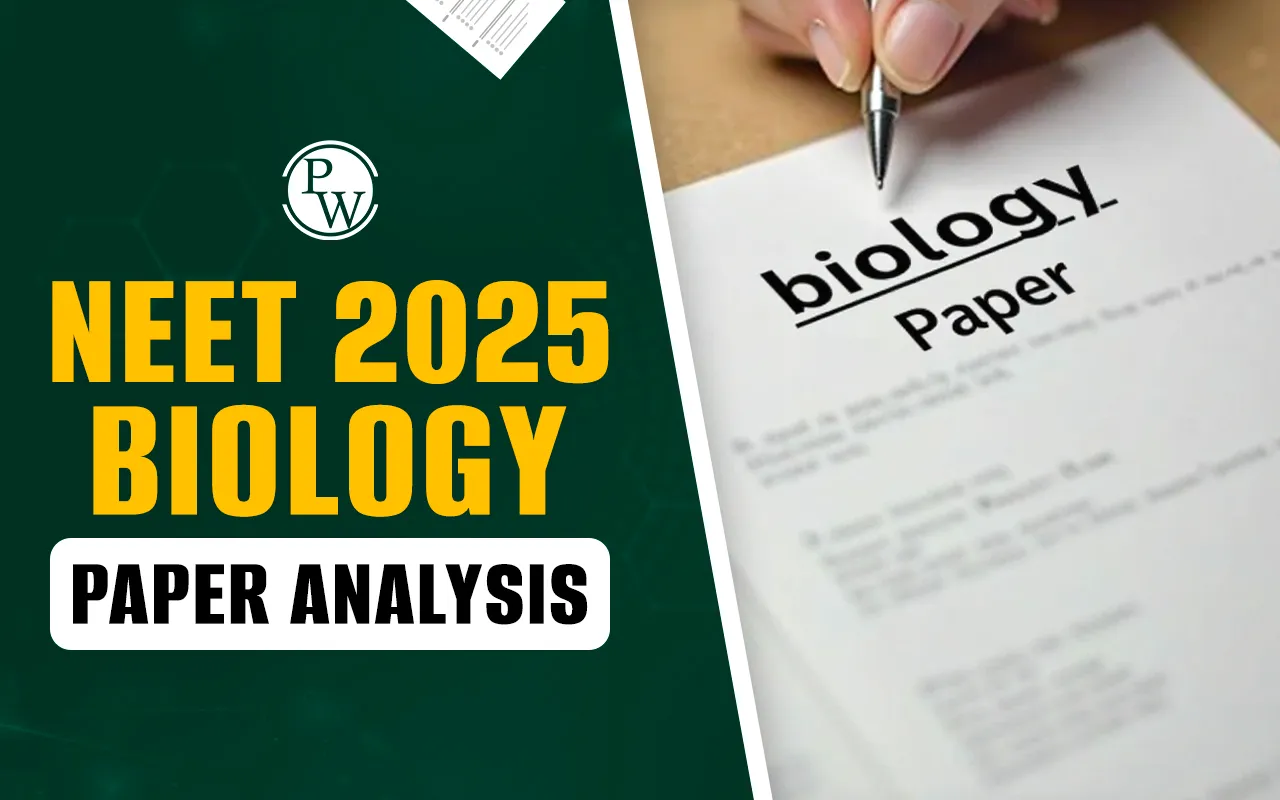

Microbes in human Welfare MCQ: Microbes are tiny organisms that are difficult to observe with the naked eye but can be seen with the help of a microscope. These organisms may be responsible for spreading diseases but they also have many benefits in human welfare and development. For instance, yeast is a microscopic fungus that helps in the production of bread through fermentation.
Microbes In Human Welfare MCQ Overview
They are used in the production of household items like cheese, paneer, and dough, industrial items like whiskey, beer, antibiotics, bioactive molecules used for primary and secondary treatment of sewage, production of biogas, and even as biocontrol agents to prevent the spread of harmful microbes. The topic is important from the NEET exam viewpoint as it holds a weightage of around 2% and every year 2-3 questions from this topic are a must. To get a thorough grasp of the question types that may be asked from this topic, we have created a list of some Multiple-choice questions in this article.| NEET 2024 Exam Important Links | |
|---|---|
| NEET 2024 Syllabus | NEET Biology Notes |
| NEET 2024 Eligibility Criteria | NEET 2024 Exam Pattern |
| NEET Previous Year Question Papers | NEET 2024 Admit Card |
Microbes in Human Welfare MCQ
Q 1. Biofertilizers are living organisms that:
- increase soil nutrients;
- optimize ecological advantages.
- reduce the risks to the environment.
- all of these
Answer- Option (4) is correct.
Explanation: Biofertilizers are substances with bacteria in them that aid in accelerating the growth of plants and trees by boosting the availability of vital nutrients to the plants. It consists of living organisms such as bacteria, blue-green algae, and mycorrhizal fungi. While cyanobacteria are distinguished by the ability to fix nitrogen, mycorrhizal fungus selectively removes minerals from organic materials for the plant. Dinitrogen molecules are transformed into ammonia during the nitrogen fixation process. As an example, certain bacteria turn nitrogen into ammonia. Thus, nitrogen is now accessible to plants.
Q 2. Statins, which reduce blood cholesterol levels, are made by
- bacteria,
- viruses,
- algae,
- yeast.
Answer- Option (4) is correct.
Explanation: The most popular cholesterol-lowering medication is statin. They are a group of lipid-lowering drugs, sometimes referred to as HMG-CoA reductase inhibitors, that lessen morbidity and death in those with a high risk of cardiovascular disease. Through the processes outlined in the lipid hypothesis, low-density lipoprotein (LDL) carriers of cholesterol play a significant role in the emergence of atherosclerosis and coronary heart disease. Statins are frequently used for primary prevention in persons at high risk of cardiovascular disease as well as for secondary prevention in those who already have the condition. Statins are excellent at decreasing LDL cholesterol. They are released by yeast.
Q 3. What do we refer to as the bacteria that produce biogas as a whole?
- Archaebacteria,
- Cyanobacteria,
- Eubacteria,
- Methanogens.
Answer- Option (4) is correct.
Explanation: Methanobacterium is one of the prevalent bacteria that produces biogas, which is commonly referred to as methanogens. These bacteria are frequently found in the rumens of cattle as well as the anaerobic sludge used in the treatment of sewage.
Q 4. What statement about a biogas plant is false?
- The slurry is covered by a floating cover,
- The biogas plant lacks an exit,
- The slurry is taken out and might be utilized as fertilizer,
- The concrete tank has a depth of 10 to 15 feet.
Answer- Option (2) is correct.
Explanation: The concrete tank at the biogas plant is between 10 and 15 feet deep. The slurry that continues rising as gas is created in the tank as a result of microbial activity is covered with a floating cover. In order to provide adjacent homes with biogas, the biogas plant includes an output that is linked to a pipe. Additionally, the slurry may be extracted and utilized as fertilizer.
Q 5. Which of the following gases is created from cow dung?
- Carbon dioxide
- Nitrous oxide
- Water-gas
- Gobar gas
Answer- Option (4) is correct.
Explanation: Methanogens are abundant in the excrement or dung of cattle, known as gobar. As a result, manure may be utilized to produce biogas, often known as gobar gas. The biogas known as gobar is created from cow manure. The phrase apparently appeared in India, where cow excrement from dairy farms is routinely used to make biogas; the Hindi word "gobar" means "cow dung." Anaerobic digestion results in the production of gobar gas. In a closed, oxygen-free environment, bacteria decompose the organic matter to generate gas and organic soil products (liquid or solid fertilizer).
An environmentally favorable substitute for natural gas and other fossil fuels is gobar gas. It can improve off-grid residents' access to renewable energy sources while assisting in the reduction of greenhouse gas emissions in rural locations.Q 6. What is IARI's full name?
- Indian Ayurveda Research Institute,
- Indian Aeronautical Research Institute,
- Indian Aerospace Research Institute, and
- Indian Agricultural Research Institute
Answer- Option (4) is correct.
Explanation: IARI stands for the Indian Agricultural Research Institute. It is situated in New Delhi. By developing suitable technology for the production of biogas, this institute enabled the production of biogas on a very wide scale.
Q 7. What one of the following influences the kind of gas produced?
- Cofactors
- Substrate
- Catalysts
- Product
Answer- Option (1) is correct.
Explanation: Depending on the microorganisms and organic substrates used, different types of gas are generated. For instance, CO2 is the primary gas generated during the fermentation of dough, the creation of cheese, and the production of drinks.
Q 8. Which gas listed below is not a component of biogas?
- CH4
- H2S
- CO2
- H2O
Answer- Option (4) is correct.
Explanation: Some bacteria create a combination of gases, including carbon dioxide, hydrogen sulfide, and methane. These gases combine to generate biogas, which is combustible and may be utilized as a source of energy.
Q 9. What kind of media do certain bacteria need to grow on to make biogas?
- Lignin,
- Cellulose,
- Chitin,
- Cheese.
Answer- Option (2) is correct.
Explanation: Methanogens, in particular, develop anaerobically on cellulosic materials to create significant volumes of methane together with carbon dioxide and hydrogen.
Q 10. Solid particles that settle during the first stage of sewage treatment are referred to as
- Floes.
- Primary sludge
- Activated sludge
- Anaerobic sludge
Answer- Option (2) is correct.
Explanation: Sewage sludge is the leftover material that is solid, semisolid, or slurry-like that is created as a byproduct of wastewater treatment procedures. Primary and secondary sludge are popular terms used to describe this material. The fundamental processes of chemical precipitation, sedimentation, and other primary processes result in primary sludge, whereas secondary sludge is the activated waste biomass produced by biological activities. Additionally, some sewage treatment facilities collect septage or septic tank solids from home-based on-site wastewater treatment systems. The sludges are frequently mixed together for additional processing and disposal.

Q 11. To turn fresh milk into curd, the inoculum is applied. By "inoculum," we mean
- A starter that is high in vitamin Bp,
- A protein-rich starter,
- A starter that has millions of LABs in it,
- Aerobic digester.
Answer- Option (3) is correct.
Explanation: Lactobacilli found in inoculum cause lactic acid to be used to curdle milk into curd. When lactobacillus breaks down milk's lactose sugar into lactic acid, the milk's casein protein partially digests and coagulates, turning milk into curd.
Q 12. Which of the following statements is false?
- Male and female gametes fuse to generate zygotes, which are diploid in nature.
- After zygotes undergo reduction division, sporophytes are formed.
- The sporophyte goes through meiosis to create spores.
- Spores sprout to create a new thallus.
Answer- Option (2) is correct.
Explanation: Zygote, which is diploid in nature, is created by the union of male and female gametes. After fusing, the zygote does not immediately proceed into reduction division. Instead, they develop a structure known as a sporophyte. To create spores, the sporophyte goes through meiosis. As they germinate, spores produce new thallus.
Q 13. Which of the following actions does the Ministry of Environment and Forests do to safeguard rivers from pollution?
- Action Plans for the Ganga River
- Narmada River Action Plan
- Action Plan for Yamuna
- Both options (1) and (3) are correct.
Answer- Option (4) is correct.
Explanation: For the purpose of raising the water quality of the Ganga River, the Ganga Action Plan (GAP) Phase-I was launched in 1985 and finished in March 2000. Beginning in 1993, the individual State Governments' bids for projects under GAP Phase-II were received and sanctioned in phases. Progressive implementation of the Yamuna Action Plan (YAP) is taking place to reduce pollution in the Yamuna River. A sanctioned budget of Rs. 705.51 crores were set forth for YAP Phase-I in 1993; however, only Rs. 682 crores of that amount was actually spent. The phase had a deadline of the year 2000 for completion.
Q 14. Trichoderma harzianum has demonstrated its use as a microbe for
- Higher plant gene transfer.
- Biocontrol of soil-borne plant pathogens
- Reclamation of wastelands
- Bioremediation of polluted soils
Answer- Option (2) is correct.
Explanation: A fungus called Trichoderma harzianum is employed as a fungicide. It is applied to the leaves of plants, seeds, and soil to treat fungi that cause several fungal plant diseases. Botrytis, Fusarium, and Penicillium sp. have all been successfully treated using commercial biotechnological treatments like 3Tac. Enzyme production is also dependent on this organism.
Q 15. Sludge produced during wastewater treatment can be handled by
- Anaerobic digesters.
- Chemicals
- Floe
- Oxidation pond
Answer- Option (1) is correct.
Explanation: In a series of procedures known as anaerobic digestion, microbes break down biodegradable material without the presence of oxygen. The procedure is applied for home or commercial waste management and fuel production. Anaerobic digestion is utilized extensively in both domestic and commercial fermentation to create food and beverage products.
If you don't want to miss the chance to get selected for the NEET 2024 exam, you must join PW NEET online coaching which gives you a chance to study under the guidance of India's top NEET faculty, along with you will get syllabus-oriented study material, Mock test series and much more.Microbes in human Welfare MCQ FAQs
Why are microbes important to human life?
What are microbes Class 12?
What is the scope of microbiology in human welfare?
What are the types of microbes?
What are 5 useful bacteria?












